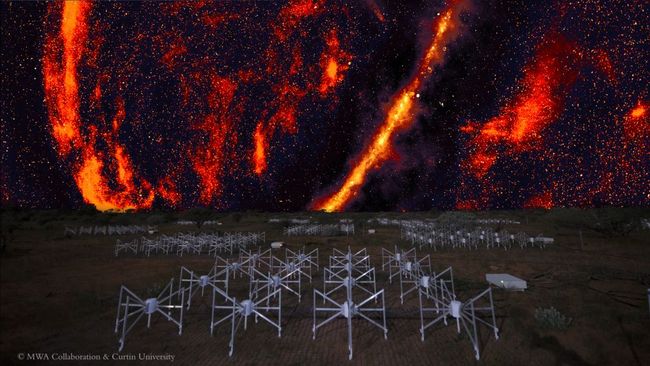SETI Investigates Alien Life in Over 1,000 Galaxies Using Untapped Radio Frequencies
Although no aliens were found, the results have helped constrain expectations of possible alien transmitter power.
A latest search that has taken astronomers more than 1,300 galaxies to find extraterrestrial signals adjusted the number of technological civilizations that could exist in space.

This search done with Murchison Widefield Array (MWA) in Australia, was searching for signals in range 80-300 MHz. This is unlike the normal usual SETI projects that always detect at the particular 1,420 MHz hydrogen emission frequency. The signals that are in the lower frequencies are definitely a virgin territory that can be experimented by SETI.
SETI Institute’s Chenoa Tremblay and the MWA’s director at Curtin University, Steven Tingay, spearheaded the search. They observed at 30 arcmin field centered on the Vela constellation and containing 2880 galaxies. Out of these, the reliability of distance measurement for 1,317 galaxies had been determined and thus, only these could be targeted by Tremblay and Tingay. This in turn allowed them to gauge the possibility of strength of any signals emanating from these galaxies.
Even though they didn’t find any signs of extraterrestrial intelligence, according Tremblay and Tingay’s study, if there was a signal coming from a transmitter of 7 x 10^22 watts at 100 MHz it would have been detected.
According to Tremblay, ‘This technology can be considered as a major breakthrough in the efforts to receive signals from such advanced extra-terrestrial civilizations. ’ Its extended field of view and low-frequency frequency selectivity make the MWA useful for this study, and our results will be applicable to other related research.
In the past, SETI has focused its effort on stars in the Milky Way galaxy only. Though, in recent years the attempts have been made. The Glimpsing Heat from Alien Technologies (G-HAT) in 2015 scanned 100,000 galaxies with NASA’s Wide-field Infrared Survey Telescope (WISE) in search of civilizations that built “Dyson swarms” around their stars and none were identified. In 2023, Yuri Uno of National Chung Hsing University stated that the maximum distance out to which there may be a civilization broadcasting a radio signal of more than 7. 7 x 10^26 watts towards the Milky Way.
Moreover, Michael Garrett from Jodrell Bank Center for Astrophysics and Andrew Siemion of Breakthrough Listen tried to look for background galaxies with aim to determine maximum power that can be detected, that is, around 10^23 to 10^26 watts. The actual detectable power hence would be influenced by the degree of separation between man and the galaxy that is presumed to be the source. Carmen Choza from the SETI Institute conducted a survey for only 97 galaxies with the Green Bank Telescope but with a negative outcome.
Where would so much power come from?
To obtain the power levels indicated the technological aliens will have to tap the star or stars depending on their size.
In 1964, Soviet astronomer Nikolai Kardashev has proposed another scale that labelled powers according to energy consumption. The first classification of Type 1 civilization would harness all the energy that is freely available in a single planet, roughly 10^16 watts or above. A Type 2 civilization could be able to tap the entire power output of a star, that of a star like our sun that is about 10^26 watts. A Type 3 civilization would harness the total amount of energy that all the stars in a galaxy produced and that would be about 10^36 watts.
The lack of any signals detected can therefore not be used as evidence that there is no technologically advanced, communicative form of extraterrestrial life; what this rather tells us is that we have not looked hard enough yet. As for as much as there are 2 trillion galaxies in the observable universe and an estimated significant number of such areas explored for only a limited time one can only guess.
Maintenance of an intergalactic radio beacon would be expensive, however, any such beacon could had been switched off during our observation or pointed in the direction of other galaxies. Furthermore, should Type 2 and 3 civilizations be scarce, these transmitters may be broadcasting at power beyond our instrument range. Further, this recent survey examined only low frequencies, however, high frequency transmitters cannot be excluded.
Tremblay and Tingay also explain that several powerful radio emitters on Earth including some of the earliest are low frequency justifying their search in this region. However because of the number of searches that SETI conducts at this frequency there is still a probability of coming across some sort of anomaly. This is particularly important so as to increase the chances of SETI capturing any signals that might have been sent.
And as Tremblay and Tingay pointed in their paper ‘Continuing to collaborate and cover various frequency ranges will be vital for future efforts’.
The study was published on 26 Aug. in The Astrophysical Journal.
Do not forget to share your opinion with us to provide you with the best posts !



0 Comments